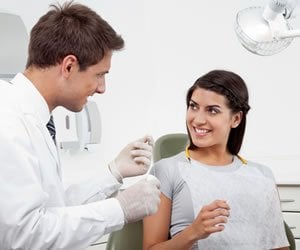Last Updated on June 27, 2022 by Laura Turner
This article is reprinted with permission from the American Student Dental Association. It originally appeared in February 2015 issue of ASDA News.

Many are quick to judge those they meet, including dentists, based solely on what they see. These initial opinions can be hard to change. Non-verbal aspects like hairstyle, clothing, posture and jewelry are often used when developing these early judgments. Some studies show that people trust appearance cues more than actual information about a person. As dentists, it is important to recognize that patients may draw conclusions about us based solely on that first interaction. What we wear to the office that day could help or hurt our patient-doctor relationships.
Dentists’ office-wear in the United States can range from conventional to casual. If a dentist is employed by another, the owner of the practice will likely dictate acceptable attire. But when self-employed, you make the decision. Some dentists prefer the relaxed ease of scrubs. Others prefer a coat and tie. Most traditional for dentists is the time-honored white coat over classic business wear, while dental assistants and dental hygienists typically wear scrubs. Over time, American dress has become more casual, however, patients can still hold onto their own expectations of professionalism when it comes to their doctors.
There have been several studies that look at the correlation between a health care provider’s attire and patient perceptions. Research concerning dentists, physicians and pharmacists in the United States all yielded similar results. When asked to choose among dental and other health care providers in casual dress, scrubs or white coat over standard business attire, patients overwhelmingly preferred the white coat to scrubs, with business or casual wear ranked last. In a study published in a 2003 Journal of Dental Education, patients reported that the dentist’s attire affected their “comfort, anxiety, and confidence levels” in addition to the patient’s view of the dentist. A study published in a 2003 Southern Medical Journal found that dress may even affect patient compliance with treatment prescribed by the health care provider.
The reason for the strong widespread patient preference for the traditional white coat over all other attire is unclear, but is likely a subconscious association. A study published in a 2013 International Journal of Medical Students speculated that the historical view of the white coat representing science and knowledge may be the reason, or perhaps the idea that white represents “purity and dedication to ‘do no harm.’”
Ironically, this study also found that the white coat is favored even when patients are told the white coat is often not washed enough and can be a source of microbial contamination. A study published in the Postgraduate Medical Journal in 2004 suggested that a white coat made it easier for patients to distinguish the physician from the assistants. The white coat signified that the wearer was a physician, scrubs indicated that the wearer was some type of health care provider, and business and casual wear was seen as “unofficial” and not indicative that the wearer was a health care provider at all.
In contrast to these findings, a study published in a 2009 Hawaii Medical Journal showed an inclination against wearing a white coat, suggesting that the partiality to the white coat may be due to social and cultural factors. The article concluded that this Hawaiian attitude was not surprising considering the relaxed attitude and atmosphere of the island. Moreover, older patients are the most ardent supporters of the white coat. This lends more credence to the idea that the preference is influenced by social and cultural features. Regardless, the white coat seems to be a substantial and respected symbol of western medicine that resonates with a large portion of the population.
Non-verbal communication is essential to the dentist/patient interaction, and dress is an important part of that. It’s important to look the part, or at least match your patient’s idea of how a dental professional should appear. So before meeting a patient for the first time, go through your checklist. Pay attention to the details. Because as Will Rogers famously quipped, “You never get a second chance to make a good first impression.”
50 years ago dental students first came together to organize what is now known as the American Student Dental Association. Today ASDA connects students on local and national levels and gives them the training they need to be better leaders and professionals.


